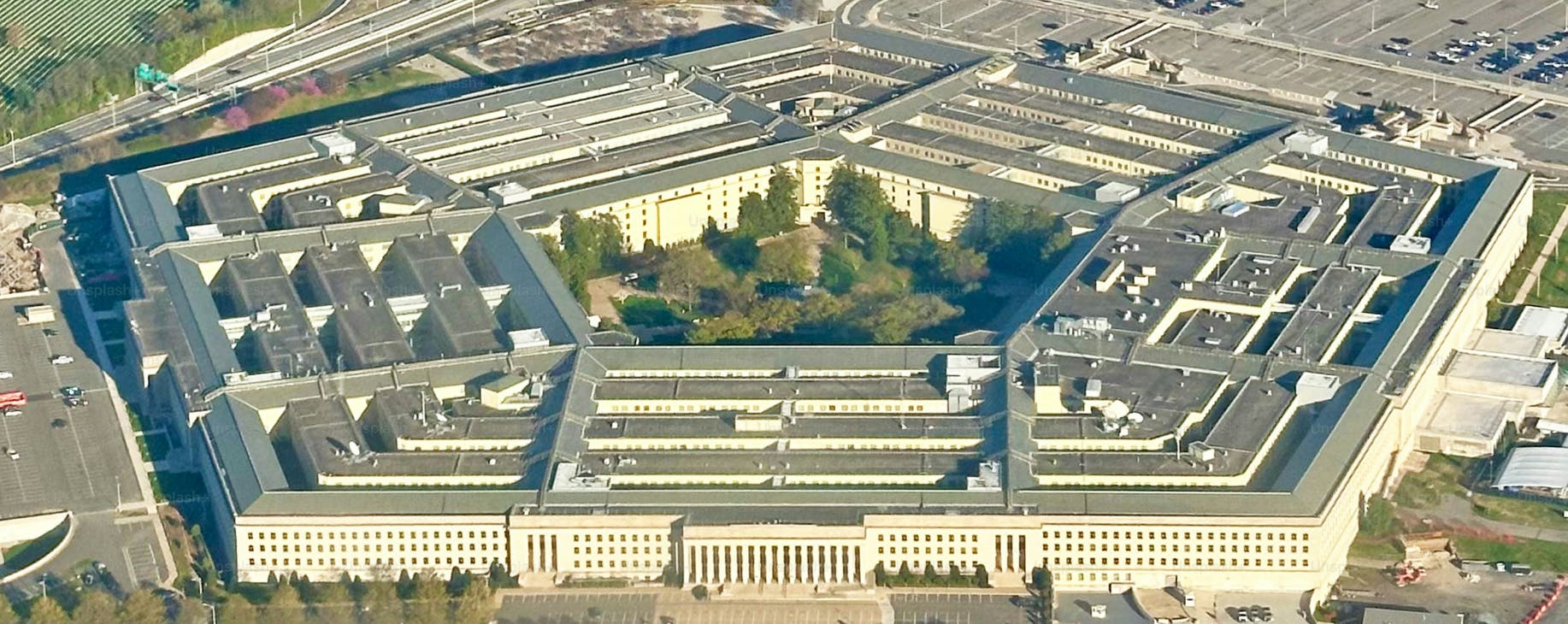
What CMMC 2.0 Means for Smaller Companies in the Defense Industrial Base
With increasing threats from nation-state actors and a growing reliance between federal agencies and contractors, the security of the entire Defense Industrial Base (DIB) has become a national priority.
The latest version of the Cybersecurity Maturity Model Certification, CMMC 2.0, is designed to safeguard sensitive defense information in defense contractors and subcontractors of all sizes, but it has particular implications for smaller companies in the DIB. Considering that small businesses constitute 73% of companies in the DIB and approximately 25% of all Department of Defense (DoD) prime contracts are awarded to small businesses, their ability to navigate CMMC 2.0 compliance is crucial to national security.
If you’re a small business or subcontractor working with the DoD, here’s what you need to know.
The challenges of CMMC compliance for small businesses
Since the inception of the CMMC program, small businesses within the DIB have voiced significant concerns.
These concerns primarily revolve around the cost and complexity of achieving and maintaining compliance, particularly as the program continuously evolves. The Office of Advocacy, an independent entity within the Small Business Administration, emphasized these challenges in public comments. In its comment letter on a draft of CMMC 1.0 program, Advocacy raised concerns that the program was so complex, detailed, and costly that many small businesses would be dissuaded from even attempting to obtain certification. Other advocates noted that the high costs could not only lead to barriers to entry, but also drive small businesses out of the DoD market.
These concerns continued throughout the rulemaking process. Small businesses consistently highlighted the financial and logistical burdens of compliance and their potential exclusion from defense contracts due to these hurdles since the CMMC 1.0 interim rule was released in September 2020. CMMC 2.0 was designed in part to address these concerns.
How CMMC 2.0 addresses challenges for small businesses
Recognizing these persistent issues, the DoD introduced CMMC 2.0, aiming to streamline the certification process and alleviate some of the burdens on small businesses, among other key objectives.
Some key changes designed to alleviate the burden of CMMC compliance on small businesses were:
- Reduced certification levels: CMMC 2.0 simplifies the model from five certification levels to three, focusing on essential cybersecurity practices. This was one of the most notable changes from CMMC 1.0 and greatly helps reduce the complexity of the CMMC model.
- Streamlined CMMC requirements: CMMC 2.0 streamlined requirements to more closely align with existing NIST SP 800-171 and NIST SP 800-172 standards, which included eliminating some unique security practices. This helps reduce the burden of compliance for small businesses, especially those already following or familiar with these frameworks.
- Added self-assessment option: CMMC 1.0 required third-party assessments for all five certification levels, which made certification too expensive and difficult for many small businesses and other organizations at the lower levels. Under CMMC 2.0, companies handling only Federal Contract Information (FCI) and/or going for Level 2 but not storing Controlled Unclassified Information (CUI) can perform annual self-assessments, which makes certification more accessible at these levels.
- Increased flexibility in assessment requirements: CMMC 2.0 also implemented flexibilities with respect to Plans of Action and Milestones (POA&Ms) and waivers to alleviate some of the burden from small businesses. While under CMMC 1.0, all requirements had to be fully implemented before certification, CMMC 2.0 allows companies to plan for and address certain gaps in their POA&Ms. This allows small businesses to meet requirements in a more gradual manner, within 180 days from the time of POA&M, without facing immediate disqualification for any gaps. This reduces upfront costs and resources required for compliance. CMMC 2.0 also allows the government to waive inclusion of CMMC requirements in rare circumstances, which could benefit smaller, nontraditional defense suppliers.
- Phased rollout: CMMC 2.0 introduced a phased implementation plan for CMMC requirements, starting with self-assessments in Phase 1 in 2025 and ending with full implementation of all levels and program requirements in Phase 4 over time. The goal of this phased approach was to give assessors time to train and to give companies time to understand and implement CMMC assessment requirements. It was also meant to help minimize the financial impacts to defense contractors, especially small businesses.

These adjustments aim to make CMMC compliance more attainable for small businesses in particular, reducing costs and administrative burdens while maintaining high cybersecurity standards. However, it’s important to note that many industry leaders have noted that the DoD did not address all comments and concerns from small businesses and there are still many other steps they can take.
In a more recent comment letter on the proposed CMMC 2.0 rule, the Office of Advocacy once again mentioned the high cost of compliance for small businesses. They also raised concerns about small businesses’ ability to meet the standards and timelines set by the CMMC 2.0 program without additional clarification and guidance from the DoD around the process to create enclaves, the role of Certified Third-Party Assessment Organizations (C3PAOs), and the enforcement mechanisms for breaches of cybersecurity, among other questions.
To help small businesses navigate CMMC 2.0 compliance, let’s cover key takeaways about the CMMC 2.0 program and requirements next.
7 Key takeaways about CMMC 2.0 for small businesses
While you might be tempted to leave CMMC requirements to the Lockheeds and Raytheons of the world, the reality is that CMMC 2.0 applies to any organization in the DIB handling FCI, Security Protection Data (SPD), CUI, or even no data, no matter their size.
The good news is that CMMC 2.0 is more accessible for small businesses than the previous model. But the expectations are still high and ignoring them could mean losing valuable DoD contracts.
Here’s several key points small businesses need to know about CMMC to stay prepared and competitive for DoD contracts:

1. Self-assessments are allowed for Level 1 contractors
If you only handle FCI, you likely fall under CMMC Level 1. Level 1 requires annual self-assessments and affirmations rather than third-party audits by a C3PAO, which are significantly more expensive. Level 1 also does not require a minimum SPRS score to pass, so companies can self-attest no matter what score they get. This lowers the barrier to compliance and makes it more feasible for smaller organizations to meet requirements without enormous budgets.
2. Self-assessments may be allowed for some Level 2 contractors
If you handle CUI or SPD, you will likely need a higher level of certification, at least Level 2. Level 2 has different assessment requirements, depending on the criticality of the CUI you handle.
- If you're handling CUI or SPD that is critical to national security or supporting CMMC authorized vendors, then you fall into prioritized acquisitions and a third-party assessment will likely be required.
- But if you are handling non-critical CUI, then you fall into a non-prioritized acquisition and a self-assessment may suffice.
Understanding the criticality of the CUI you handle and your contract details is crucial, as this determines your assessment requirement and the effort and cost of your compliance journey.
3. You still need to implement NIST SP 800-171 at non-critical Level 2
Even if you're allowed to self-assess at Level 2, you still need to fully implement all 110 controls in NIST SP 800-171. These are not suggestions — they’re mandatory security requirements to achieve Level 2 certification.
Preparing system security plans (SSPs), conducting regular risk assessments, maintaining a Supplier Performance Risk System (SPRS) score, and tracking plan-of-action items are just a few examples of the compliance requirements you’ll have to meet.
4. You’ll likely fall into the first phase of the CMMC rollout
The DoD plans to implement CMMC 2.0 gradually in four phases, with each phase taking place one year after the previous one. Phase 1, which will make CMMC Level 1 or Level 2 self-assessments mandatory for certain contract awards, will start on the effective date of the 48 CFR CMMC Acquisition rule. This is expected to happen sometime in 2025.
Many small businesses will likely fall into this phase so the time to start getting ready is now.
5. Don’t wait until CMMC requirements are in contracts
The phased rollout does not mean that organizations can delay CMMC implementation. In fact, implementation is particularly urgent for subcontractors that need Level 1 and 2 compliance.
Large primes are increasingly looking to work only with subcontractors that are compliant with CMMC 2.0. Being able to demonstrate your compliance posture proactively, even before the phased rollout kicks off, can differentiate your small business and ensure you stay competitive.
6. Costs may seem higher than CMMC 1.0 but they aren’t
The CMMC proposed rule included an impact and cost analysis of CMMC 2.0. This section begins by noting public comment feedback that indicated the cost estimates for CMMC 1.0 were too low and, as a result of several improvements to its cost analysis methodology, some CMMC 2.0 costs may be higher than those included in CMMC 1.0.
However, CMMC 2.0 was designed to be more cost-effective. To reduce costs, CMMC 2.0 streamlined requirements at all levels, eliminated unique practices and maturity processes, and added the option for companies to perform self-assessments at certain levels. While Advocay and other industry stakeholders still raise concerns about the true costs of CMMC 2.0 implementation and continuous compliance, these changes reflect some concessions to smaller businesses with limited IT and security resources.
7. The government wants to help reduce your compliance burden
The DoD, Congress, SBA, and other federal agencies have taken steps to reduce the compliance burden on small businesses now that the CMMC 2.0 rule is finalized.
Looking back on the CMMC final rule, this included a response to comments from the Advocacy of the Small Business Administration acknowledging their concerns. In this response, the DoD committed to enhancing CMMC training after the Rule is effective and also pledged to reinstate outreach efforts specifically targeting small businesses to increase familiarity with CMMC requirements. Towards this end, the DoD Office of Small Business Programs has launched several programs, including the APEX Accelerator program, which aims to teach small businesses what's needed for them to do business with the government, and strengthening the Mentor-Protege Program. Under this program, small businesses are partnered with other companies to learn how to expand their footprint within the DIB.
The Army also launched the pilot Next-Generation Commercial Operations in Defended Enclaves (NCODE) program to help small businesses meet CMMC requirements.
Congress and small business advocates are also working on fixes to help small businesses comply with CMMC, including a possible tax incentive.
While many of these programs and fixes are still in the works, the message is clear: the government is committed to helping alleviate some of the pain and struggle of CMMC compliance for small businesses in the DIB.
What can small businesses do now to prepare for CMMC 2.0 compliance
To navigate the CMMC 2.0 landscape effectively, small businesses can start taking the following steps as soon as possible:
- Understand your data: To start, determine whether your organization handles FCI, SPD, CUI, both, or none of the above as this will dictate your required compliance level.
- Conduct a gap analysis: Next, assess your current cybersecurity practices against FAR 52.204-21 or NIST SP 800-171, depending on your designated CMMC level, to identify areas needing improvement and an SPRS score to see where you stand. This can be done most efficiently using a compliance automation tool or manually using a CMMC checklist.
- Leverage automation tools: Consider utilizing compliance automation platforms to streamline SSP generation, evidence collection, vendor and risk documentation, and continuous monitoring. Automation can significantly reduce errors and the manual overhead of compliance, especially for small businesses that lack expertise, resources, and time.
- Consult a CMMC expert: A CMMC Registered Practitioner Organization (RPO), vCISO, or consultant with CMMC experience can provide invaluable expertise and knowledge without requiring small businesses to hire this type of professional in-house.
- Engage in DoD and other federal programs: Consider participating in initiatives like the DOD's APEX Accelerator program, DOD's Mentor-Protege Program, and Army's pilot NCODE program to access resources and environments that can help your small business meet CMMC requirements.
- Develop a System Security Plan (SSP): Document your cybersecurity practices, policies, and procedures, outlining how you meet each requirement in an SSP. This document is critical, but very time-consuming to create. The earlier you start, the better as manual SSP generation can take months.
- Implement continuous monitoring: Achieving and maintaining CMMC compliance hinges on continuous improvement. A robust continuous monitoring program that leverages automation can help drive your continuous compliance strategy and ensure rapid response to failing controls, changes in your environment, and emerging threats.
How small businesses can seize CMMC 2.0 as a business opportunity
CMMC 2.0 isn’t just a compliance hurdle. It's a chance to protect defense information, open the door to more DoD contracts, and build trust with prime contractors,
For smaller companies, the new model offers more flexibility and less red tape. But it also reinforces that cybersecurity is a shared responsibility and every organization in the DIB has a role to play.
If you take proactive steps now, you’ll not only reduce risk but also position your small business for long-term success in the federal contracting space.


